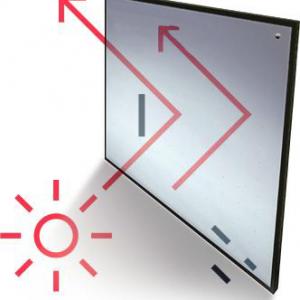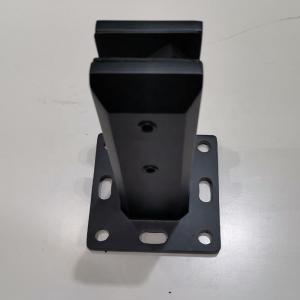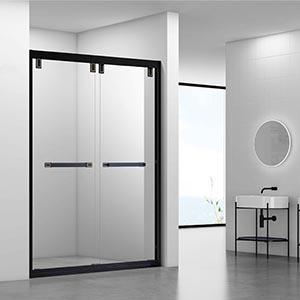Best Sliding Glass Doors: Beyond Aesthetics – 3 Hidden Factors That Save You Money
best sliding glass doors: Beyond Aesthetics – 3 Hidden Factors That Save You Money
You’ve scrolled through dozens of listings for sliding glass doors, comparing frame colors and glass tints. But what if the “perfect” door you pick ends up costing you hundreds extra in energy bills? Or rusts away in three years because you didn’t account for your coastal location? When it comes to choosing the best sliding glass doors, looks are just the start. The doors that truly deliver—whether for a home, a hotel, or a commercial space—are the ones built to handle your specific environment and needs.
At Hiking Glass & Mirror, we’ve seen buyers get dazzled by sleek designs only to regret it later. A client in California once chose doors for their restaurant patio based solely on style; six months later, their AC bills spiked because the single-pane glass let in too much heat. Another in Florida replaced their doors after two hurricane seasons—salt air had eaten through the unprotected frames. Let’s skip the marketing hype and focus on the underrated factors that make the best sliding glass doors worth every penny.
best sliding glass doors for energy efficiency: Stop Wasting Money on Bills
Energy efficiency isn’t just “green”—it’s practical. A poorly insulated sliding glass door acts like a hole in your wall, letting heat seep in (or out) and forcing your HVAC system to work overtime. The best sliding glass doors for energy efficiency are designed to lock in temperature, and it all comes down to two key components:
1. Glass: It’s All About the Layers (and Coatings)
Single-pane glass is cheap, but it’s a energy disaster. The best sliding glass doors use double or triple glazing—two or three panes with a layer of air or gas (like argon) in between. That gas acts as insulation, slowing heat transfer. A client in Oregon swapped their single-pane patio doors for double-glazed ones; their winter heating bills dropped by $120 a month.
But glazing alone isn’t enough. Look for low-emissivity (low-e) coatings—a thin, invisible layer on the glass that reflects UV and infrared light. It keeps heat out in summer and traps it in winter without blocking natural light. We installed low-e double-glazed doors in a Colorado cabin; the owner noted they used their wood stove half as much as before.
2. Frames: Don’t Overlook the Material
A great glass pane won’t save energy if the frame leaks. Avoid cheap aluminum frames—they conduct heat, turning your door into a radiator. Instead, opt for:
- Vinyl frames: They’re naturally insulating and resist heat transfer. Perfect for moderate climates.
- Fiberglass frames: Even better for extreme temperatures (hot or cold). They don’t expand or contract much, so gaps that let air in are less likely to form.
- Wood-clad frames: For a classic look with efficiency—wood insulates well, and a protective aluminum or vinyl exterior prevents rot.
Test tip: Hold your hand near the frame on a hot or cold day. If you feel a draft or notice the frame is warm/cold to the touch, it’s not insulated well.
Best Sliding Glass Doors for Coastal Areas: Fight Salt, Wind, and Humidity
Coastal living comes with perks—but salt air, high humidity, and strong winds are brutal on sliding glass doors. The best sliding glass doors for coastal areas aren’t just “waterproof”—they’re built to resist corrosion and stand up to storms.
1. Frames That Laugh at Salt
Salt air eats through standard aluminum like candy. The best coastal doors use marine-grade aluminum—thicker, with a special alloy that resists rust. Even better: powder-coated marine aluminum. The powder coating adds a protective layer that’s baked on, so it won’t chip off like paint. A beach house in the Carolinas has had our powder-coated aluminum doors for 8 years; they still look new, while their neighbor’s uncoated doors needed replacement after 3.
Avoid steel frames entirely—they rust quickly near the ocean. If you want wood, go for tropical hardwoods (like teak) that resist moisture, and make sure they’re sealed with a marine-grade finish.
2. Seals That Block Wind and Spray
Storms don’t just bring rain—they drive water into tiny gaps around doors. The best sliding glass doors for coastal areas have multi-layer weatherstripping: silicone gaskets around the glass, plus foam or rubber seals along the tracks. Some even have “weep holes” in the tracks—small drains that let water escape instead of pooling and seeping in.
We once installed doors for a bed-and-breakfast in Hawaii. During a tropical storm, the owner checked the rooms—no leaks, even though wind-driven rain was hitting the doors sideways. The secret? The doors had interlocking stile seals, which lock the two panels together tightly when closed, blocking water.
best sliding glass doors maintenance tips: Make Them Last 20+ Years
Even the best sliding glass doors won’t last if you ignore them. The good news? With simple maintenance, you can avoid sticky tracks, foggy glass, and rust—keeping your doors smooth and functional for decades.
1. Track Care: Keep Them Clean (and Lubricated)
Dirt, sand, and leaves get trapped in tracks, making doors stick or scratch. Once a month, vacuum the tracks with a narrow attachment, then wipe them down with warm, soapy water. For coastal areas, rinse tracks with fresh water to wash away salt.
After cleaning, apply a silicone lubricant (avoid oil-based ones—they attract more dirt). A little goes a long way: just a thin coat on the track’s rails. A client in Texas told us this routine made their 10-year-old doors slide like new.
2. Check Seals and Gaskets Twice a Year
Weatherstripping and gaskets wear out over time, especially in harsh climates. Every spring and fall, inspect the edges of your doors. If you see cracks, peeling, or gaps, replace the seals ASAP—waiting lets in air and moisture, which damages frames and glass.
Most hardware stores sell replacement weatherstripping kits, and it’s easy to install with scissors and a little adhesive. A landlord in Florida started doing this annually; they used to replace doors every 5 years, now they last 15+.
3. Handle Glass with Care
Avoid using harsh cleaners (like ammonia) on glass—they can damage low-e coatings. Stick to mild dish soap and a soft cloth, or a cleaner made for coated glass. For tough spots (like salt residue), use a vinegar-water mix (1:1) and wipe gently.
If you get a small scratch, don’t panic—use a glass polish (like cerium oxide) to buff it out. Deep scratches might need professional repair, but catching them early prevents them from spreading.
 English
English Russian
Russian




